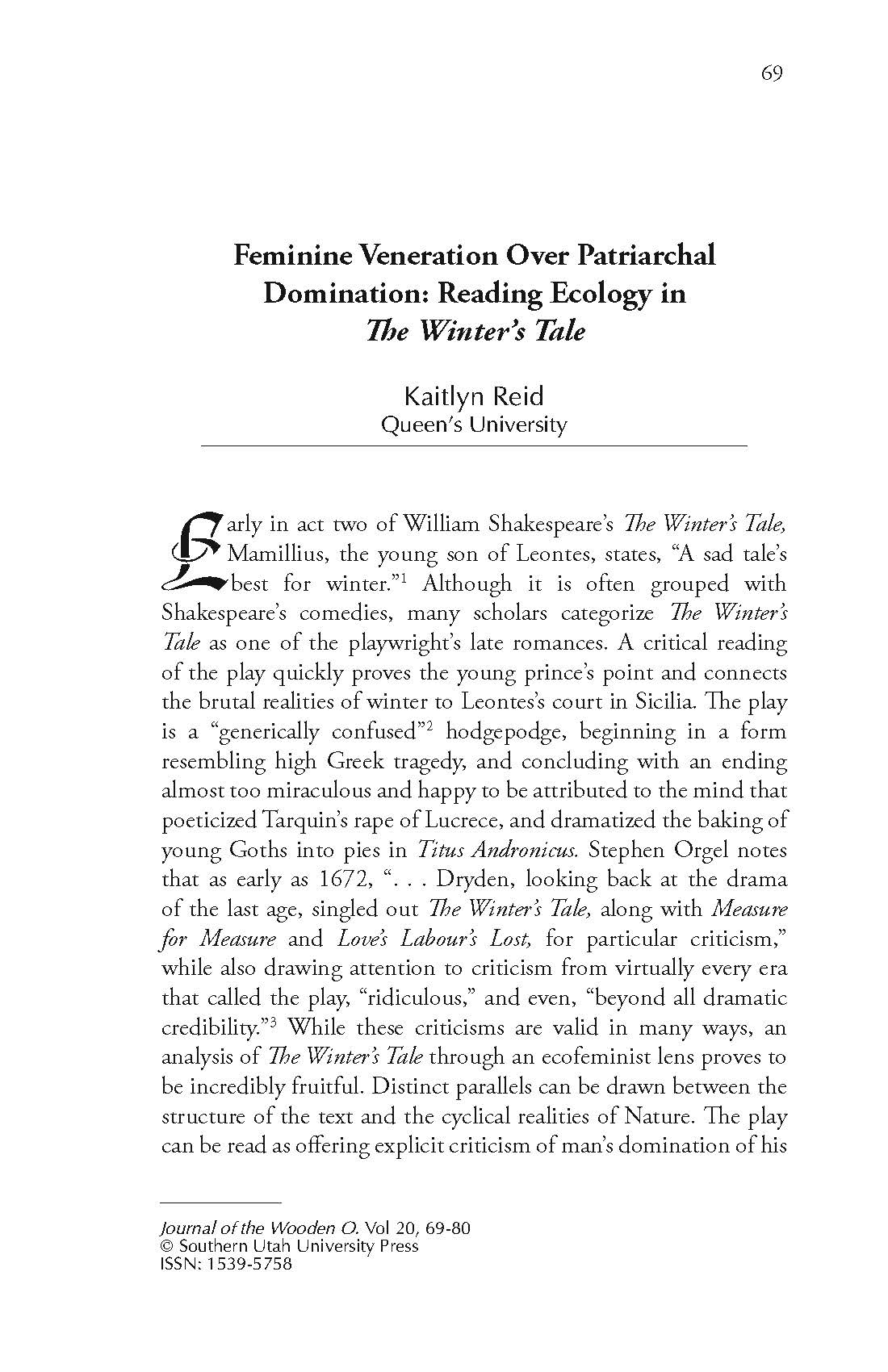Feminine Veneration Over Patriarchal Domination Reading Ecology in The Winter's Tale
Main Article Content
Abstract
Early in act two of William Shakespeare’s The Winter’s Tale, Mamillius, the young son of Leontes, states, “A sad tale’s best for winter.”1 Although it is often grouped with Shakespeare’s comedies, many scholars categorize The Winter’s Tale as one of the playwright’s late romances. A critical reading of the play quickly proves the young prince’s point and connects the brutal realities of winter to Leontes’s court in Sicilia. The play is a “generically confused”2 hodgepodge, beginning in a form resembling high Greek tragedy, and concluding with an ending almost too miraculous and happy to be attributed to the mind that poeticized Tarquin’s rape of Lucrece, and dramatized the baking of young Goths into pies in Titus Andronicus. Stephen Orgel notes that as early as 1672, “. . . Dryden, looking back at the drama of the last age, singled out The Winter’s Tale, along with Measure for Measure and Love’s Labour’s Lost, for particular criticism,” while also drawing attention to criticism from virtually every era that called the play, “ridiculous,” and even, “beyond all dramatic credibility.”3 While these criticisms are valid in many ways, an analysis of The Winter’s Tale through an ecofeminist lens proves to be incredibly fruitful. Distinct parallels can be drawn between the structure of the text and the cyclical realities of Nature. The play can be read as offering explicit criticism of man’s domination of his environment and an encouragement to substitute the domination, demonstrated primarily by Leontes, with veneration, primarily illustrated by Hermione and Perdita.
